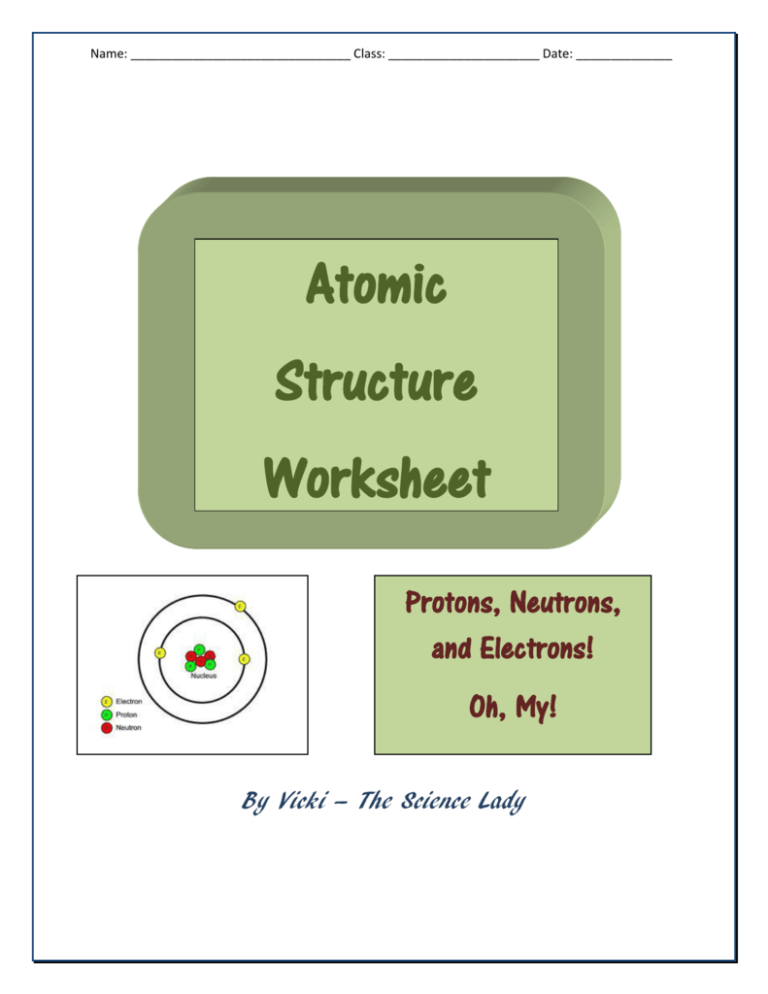Atomic Structure Worksheet
advertisement

Name: ________________________________ Class: ______________________ Date: ______________ Atomic Atomic Structure Structure Worksheet Protons, Neutrons, and Electrons! Oh, My! By Vicki – The Science Lady Name: ________________________________ Class: ______________________ Date: ______________ Atomic Structure Use a periodic table to help you fill in the chart below. Mass numbers are rounded to the nearest whole number. Remember: Atomic number = number of protons = number of electrons Mass number = number of protons + number of neutrons Element Symbol Atomic Number Beryllium Mass Number Number of Protons Number of Neutrons Number of Electrons 4 Ca 40 26 Silicon 26 28 18 40 10 Silver 54 9 Name: ________________________________ Class: ______________________ Date: ______________ Atomic Structure Answer Key Use a periodic table to help you fill in the chart below. Mass numbers are rounded to the nearest whole number. Remember: Atomic number = number of protons = number of electrons Mass number = number of protons + number of neutrons Mass Number Number of Protons Number of Neutrons Number of Electrons Element Symbol Atomic Number Beryllium Be 4 9 4 5 4 Calcium Ca 20 40 20 20 20 Iron Fe 26 56 26 30 26 Silicon Si 14 28 14 14 14 Argon Ar 18 40 18 22 18 Fluorine F 9 19 9 10 9 Silver Ag 47 108 47 61 47 Xenon Xe 54 131 54 77 54 Name: ________________________________ Class: ______________________ Date: ______________ Teacher Notes Students can use a separate periodic table, or use one from their textbook. This review can teach them how to find their way around the periodic table. It should be done after they have been introduced to atomic structure. Remind the students that the atomic number is equal to the number of protons, which is equal to the number of electrons, and it written at the top of the sheet. Atomic mass is equal to the number of protons plus the number of neutrons, so they can find the number of neutrons by subtracting the number of protons from the atomic mass. I use this as a quick review to reinforce basic facts that can be found by using the periodic table. It could be used as homework if they have access to a periodic table, or incorporate it in a quiz or test. You might want to ‘white-out’ the giveaways: atomic number = number of protons, etc, if you use it in a test, but be sure they have a periodic table to use.





